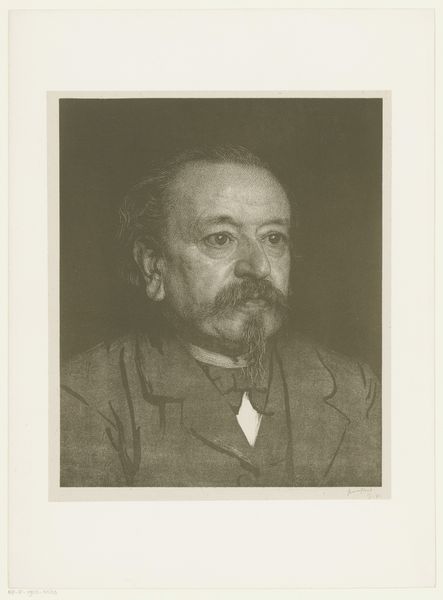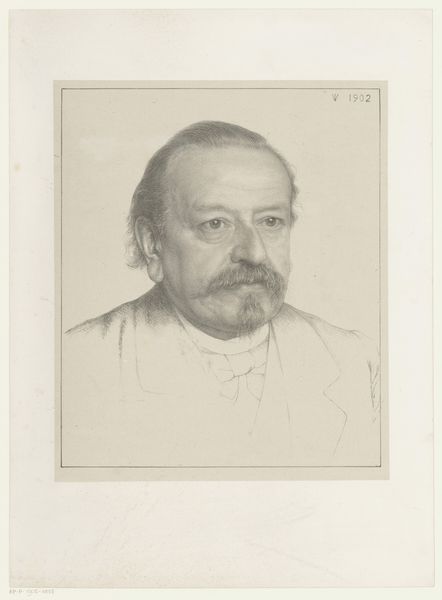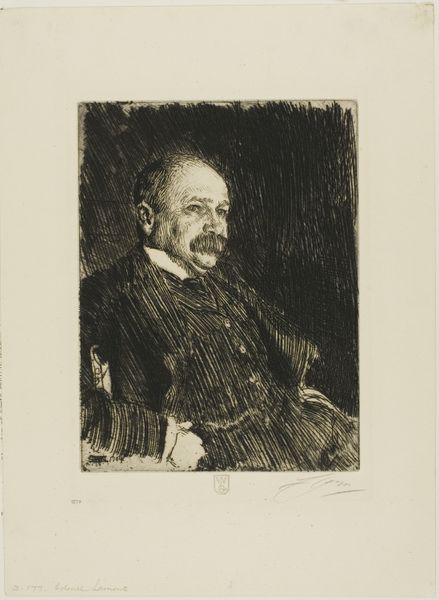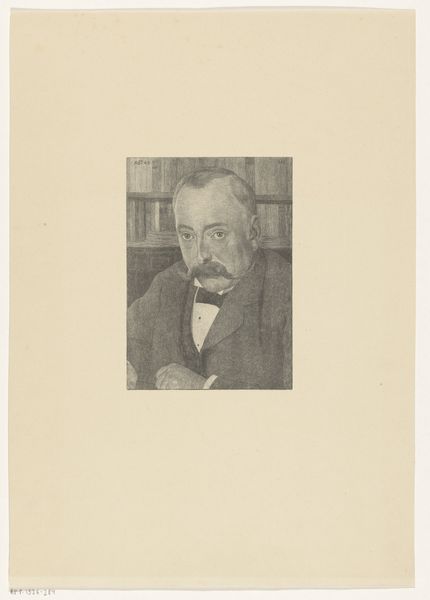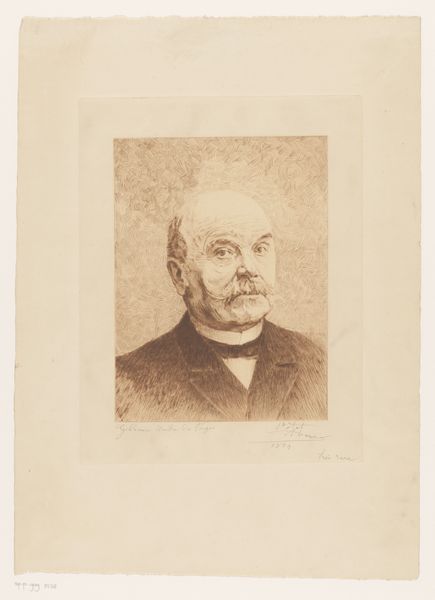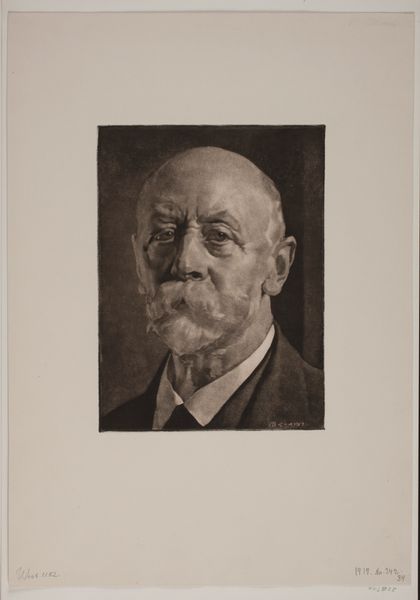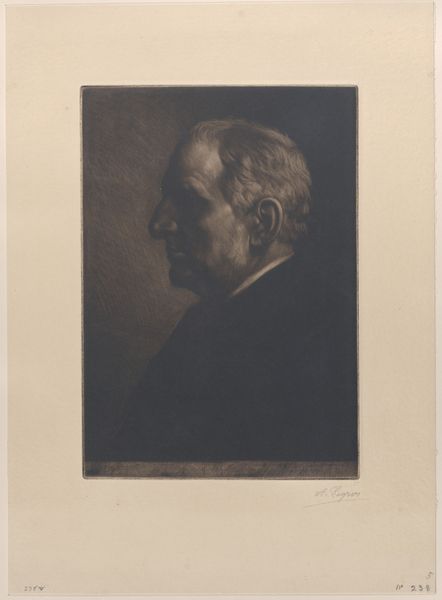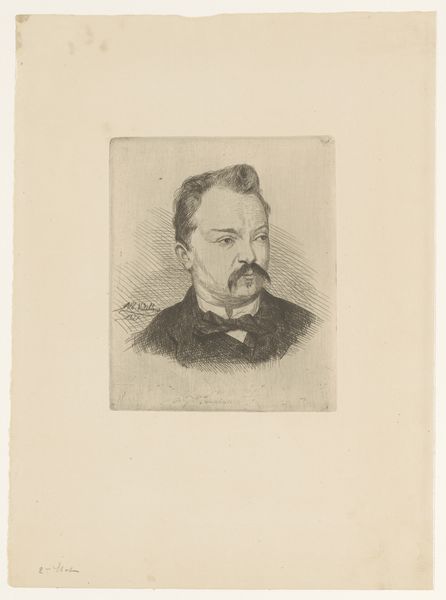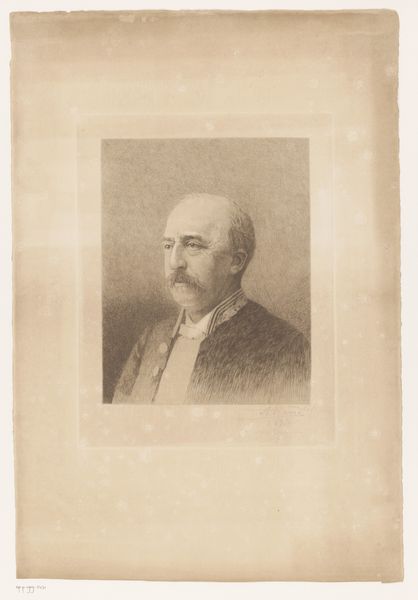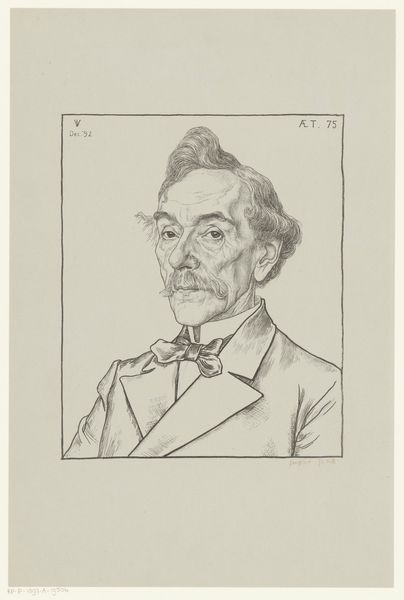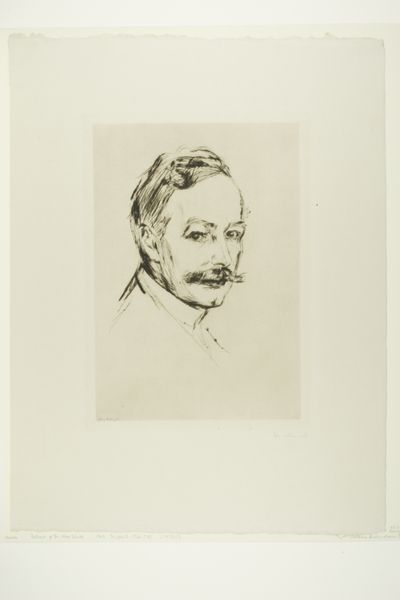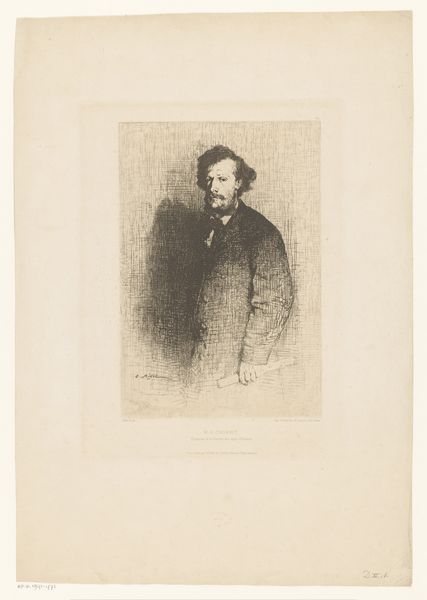
drawing, print, etching, pencil, charcoal
#
drawing
# print
#
etching
#
charcoal drawing
#
pencil drawing
#
pencil
#
charcoal
#
realism
Dimensions: height 475 mm, width 345 mm
Copyright: Rijks Museum: Open Domain
Editor: This is Jan Veth's "Portret van Reinier Willem Petrus de Vries," created around 1901, now at the Rijksmuseum. It's made using pencil, charcoal and etching. The stark contrast immediately gives it a somber feel, almost like a memento mori. How do you interpret the visual elements in this work? Curator: Notice the delicate balance between the graphic boldness of the etched lines and the softer gradations achieved with charcoal and pencil. The artist manipulates tonal value to create a sense of depth, especially around the face and collar, wouldn't you agree? How does the textural interplay inform your reading of the subject? Editor: It adds complexity, almost like the subject has seen a lot and the artist is capturing layers of history, especially using contrasts between hard lines and smudges around the eye. So is the meaning held only in the aesthetic rendering? Curator: The etching medium itself lends a graphic quality, creating both detail and a sense of linear rhythm. And while it's a representational work, the focus on tonal subtleties elevates it beyond a mere likeness. The interplay of dark and light operates to draw us into the interior life suggested on the surface of the portrait. Editor: That's a perspective I hadn't considered. I was focused more on the expression. I now appreciate the way those stylistic choices subtly hint at internal reflections without stating them outright. Curator: Indeed, a successful work operates at multiple registers, subtly guiding our perceptual engagement and expanding our field of comprehension.
Comments
No comments
Be the first to comment and join the conversation on the ultimate creative platform.
